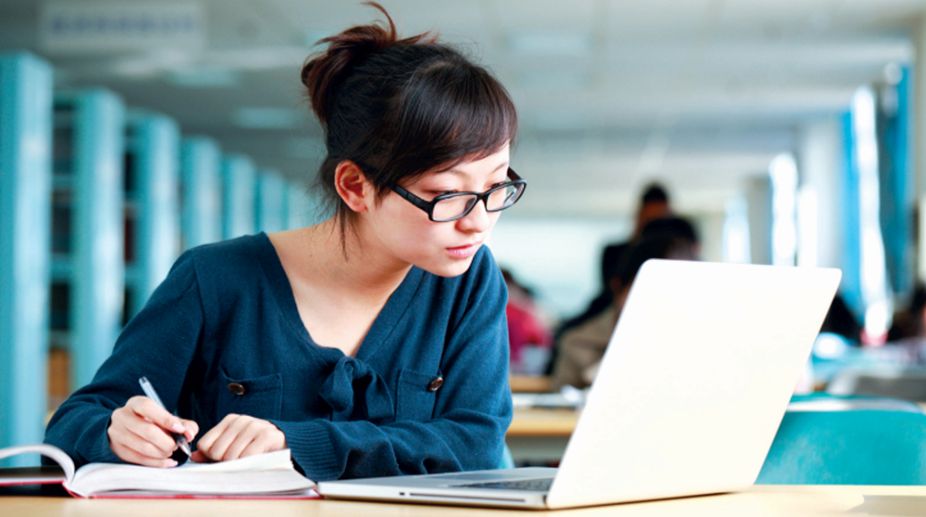The government has recently announced radical changes in the education system with the focus on enhancing the quality and components of education, which over a period of time have the potential to deliver a higher calibre talent that would enter the workforce. In this context, many have recognised digital technology as an effective enabler for creating transformative impact on education in the early stages of school education.
With Covid-19, an estimated 1.2 billion students in 186 countries around the world have had to adapt to the new mode of learning in a very short span of time – something even the most ambitious futurologists would not have been able to predict. It’s a fact that currently majority of the educational institutions and educators are facing various challenges such as limited bandwidth, lack of training or familiarity with the systems to deliver effective learning, constraints of access to devices and inadequate preparation and unavailability of appropriate content as required for different target audiences. Some even fear that these may result in poor learning experiences. Therefore, it must be asked if schools and parents would want to continue with digital mode of technology when normalcy returns.
Advertisement
The answer is an emphatic ‘yes’ simply because once the stakeholders have got on to the digital platform complete reversal is unlikely. They find the digital medium so compelling that even with imperfect delivery capabilities, teachers are the heroes who are now connected to millions of homes.
This presents an opportunity for the parents to get to know the teachers and get a ringside view of the goings on in the classrooms. Besides being able to observe their own son/daughter’s conduct in the virtual classrooms, they are able to observe other students and particularly how teachers interact and teach in the classrooms. Teachers encourage children to use their video cameras and other meagre resources that they may have to respond or work in teams on assignments. All of these are relatively new experiences, and the transparency, personalisation and intimacy the digital medium offers would act as the catalytic force for the medium to be not wished away even in the postCovid era.
Therefore, the current phase gives us an opportunity to reimagine teaching and learning for the post-Covid era. The joys of interaction and the benefits of physical classrooms would never be replaced with digital technologies, but the blended learning format provides us with the possibilities to rethink how academics would be handled.
The lockdown has forced institutions to go online, without any warning or preparation, and consequently, learn fast. There is a lot of experimentation going on as there is scarce experience in this area. The faculty have had to learn the medium and then understand how to use it effectively in the class. Juggling between various controls, chat windows, allowing people electronically into the class, watching online videos, or switching between various windows or drawing on a separate digital pad or on-screen, could become overwhelming for most faculty. But there is really no choice but to learn. Many faculties have stepped up to the task, for this is the medium of tomorrow.
Acquisition of given knowledge that can be transmitted didactically by a teacher or a text constitutes only one minor segment of curricular content. It is this segment that is largely amenable to online and digital forms of transaction. Disciplines, particularly at the undergraduate level, which are textbook-based and pretend to be relatively stable bodies of certitudes, lend themselves somewhat to such transactions. But learning in higher education means much more than this.
It involves development of analytical and other intellectual skills, the ability to critically deconstruct and evaluate given knowledge, and the creativity to make new connections and syntheses. It also means to acquire practical skills, explore, inquire, seek solutions to complex problems, learn to work in teams and more. All these by and large assume direct human engagement ~ not just teacher-student interaction, but also peer interactions, including informal ones. Learning often happens through osmosis in social settings. Deconstructing given knowledge in relative isolation is never the same as doing it through a dynamic group process.
Arguably, some of this can, to some extent, be built on to a digital platform. But curricular knowledge tends to adjust its own contours according to the mode of transaction and the focus of evaluation. It gets collapsed into largely informationbased content when transacted through standard and uniform structures of teaching-learning and examination.
While digital forms of learning have the potential to enable students to pursue independent learning, conventional and digital forms of education should not be considered mutually exclusive. Online learning needs to be understood as one strand in a complex tapestry of curricular communication that may still assign an important central role to direct human engagement and social learning.
Flipped classroom approach which encourages students to read and consume information from digital avenues ahead of class and thus elevates the classroom discussions for introspection and debate to challenge young minds would require teachers to do their homework now. Low bandwidth solutions and inexpensive devices to access learning would require innovative work to create solutions and global opportunities are waiting for entrepreneurs with the right solutions. Not every child can afford a Byju subscription to get access to the attractively packaged content, but smart content curated from the rich open sources available on the internet would be the possible way forward.All of this would require armies of teachers to be trained and supported by education experts and enthusiastic citizens coming together for enriching the content repository for students. To conclude, the digital journey has commenced in right earnest for the Indian educational institutions ~ as they traverse their way forward ~ a combination of imagination, innovation and collaboration will make their journey rewarding.
The writer is associated with Eastern Institute for Integrated Learning in Management











